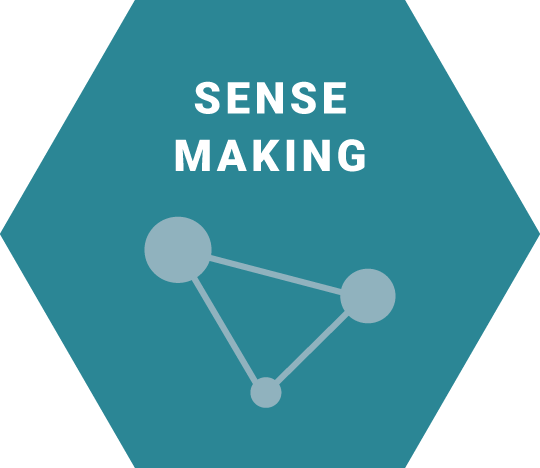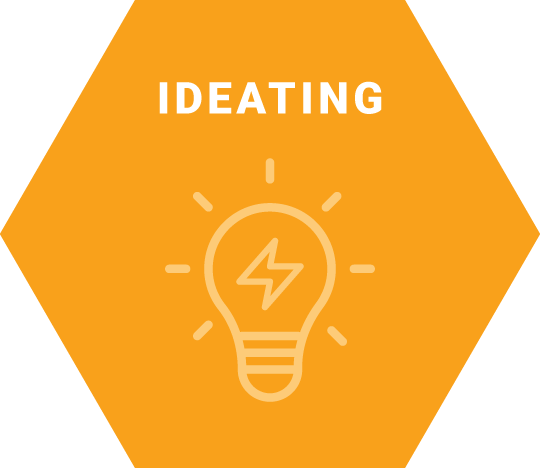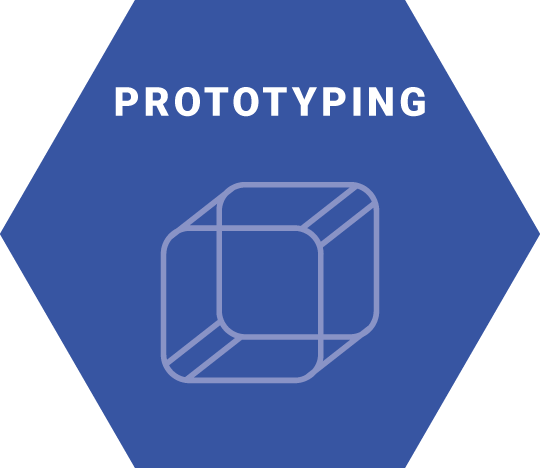| Module | Methods | Who | Where | When |
|---|---|---|---|---|
|
|
Group Listening Conversations to ask PAC (Parent Advisory Council) officers what their programming needs are and identify commonalities across the network. |
PAC officers / parents / caregivers 25 - 30 participants Facilitated by FACE (Family Community Engagement in Education) Managers. |
At a school or virtually. | Week 1 Two hour network-level PAC/PLN (Parent Leadership Network) meetings. |
|
|
Affinity Clustering, Themes, and Insights |
PAC officers / parents / caregivers 25 - 30 participants Facilitated by FACE Managers. |
At a school or virtually. | |
|
|
Creative Connections Map to spark new ideas for outreach and/or advocacy opportunities with parents to improve academic success for students. |
PAC officers / parents / caregivers 25 - 30 participants Facilitated by FACE Managers. |
At a school or virtually. |
Week 2 |
|
|
Prioritization Matrix to evaluate, prioritize, and combine ideas to identify two or three specific initiatives in alignment with their CIWP (Continuous Improvement Working Plan) to be supported by CPS. |
PAC officers / parents / caregivers 25 - 30 participants Facilitated by FACE Managers. |
At a school or virtually. | |
|
|
Concept Poster to show the two or three specific programming initiatives that were prioritized and highlight how they will improve the school. |
FACE Managers + PAC members leading these initiatives. | At a school or virtually. | Week 3 One or two hour small group working session. |
The objective is to help plan programming for parents at the network level. You will listen, analyze, identify and prioritize patterns, then use this information to prototype your ideas for new programming at the network level.
|
|
Where:CPS School or virtually via Google meets |
When:Week: 1 |
Supplies Needed:
|
To develop the skills to actively listen, identify programming needs and prioritize patterns that emerge during the discussion.
Listening / Group Listening Conversations
Conduct or attend one 60-minute Group Listening Conversation with 10-15 PAC officers, Parents, and Caregivers in order to ask PAC officers what their programming needs are and identify commonalities across the network.
- Align as a team on the topic and scope of your session.
- Identify who needs to attend your session.
- Obtain any necessary permissions for attendance, recording video or photographs.
- Prepare the room and materials for the session.
- Prepare your agenda and identify a clear goal for artifacts and outputs that you want to capture during the session.
- Determine roles for your team members, and align on expectations for documentation.
- To begin, give participants a starting point for the discussion by sharing a story, or providing a template with an example.
- Ask participants to capture their beliefs through notes, drawings and other means.
- Listen more than you talk.
- Ask clarifying questions whenever possible to avoid making assumptions about what people mean.
- At the end of the session provide information of next steps and follow-up opportunities.
LEARN MORE ABOUT GROUP LISTENING CONVERSATIONS
Sense Making / Affinity Clustering, Themes, and Insights
Conduct an Affinity Clustering, Themes, and Insights exercise with session attendees in order to identify and prioritize patterns related to programming needs (topics, delivery methods, etc), as well as opportunities and challenges.
- Begin by making all of the relevant data points captured during the Group Listening Conversation visible.
- Pin these to a wall, large sheet of butcher paper, flip charts, foam core boards or virtual white board.
- Choose one piece of data. Consider the meaning behind the statement.
- Compare the other pieces of data until you find a second that you think has a connection to the first.
- Write down the relationship in one to three words (a theme) next to them.
- Continue to compare the remaining pieces of data with the theme.
- If a data point easily fits within the existing theme, place it in the group.
- If a data point does not fit into an existing theme, place it to the side of the existing theme(s) to start a new group.
- Once a new group has multiple data points in it, label it with a theme.
- Repeat until you’ve worked through all the data.
- If a theme has many pieces of data, see if it can be further broken into multiple themes.
- If a theme has very few pieces of data, see if each piece of data will fit within a larger theme.
- Reflect on the connections between the data points in each cluster.
- Rewrite each final theme as one or two short sentences.
- Select one theme and ask “why”?
- Use the data points and your own perspective to write an insight that definitively, provocatively and completely answers “why”.
- Repeat this across all other themes.
|
|
Where:CPS School or virtually via Google Meets |
When:Week: 2 |
Supplies Needed:
|
To develop new ideas and prioritize initiatives for parent programming at the network level.
Ideating / Creative Connections Map
Facilitate the Creative Connections Map exercise with 25-30 PAC officers, Parents, and Caregivers. Conduct this exercise in order to spark new ideas for outreach and/or advocacy opportunities with parents to improve academic success for students.
- Divide your group into teams of four to six people.
- Give each group a Creative Connections Map template and any relevant themes or insights from your affinity clustering, themes and insights activity from the previous session.
- Choose a group for your column headers such as stakeholder groups, common pain points or needs, or specific steps or phases in the experience. This can be based on themes and insights from the previous session.
- Select up to five categories from within your group and write one category in the header of each column of your template.
- Choose three enablers to put as headers for each row of your template. You may select from the enabler cards provided in the template or come up with your own.
- Leave one row blank for the “wild card” category to capture any ideas that don’t fit into any other selected enabler.
- Conduct the first round of ideation.
- Ask each person to produce ideas individually in silence for seven minutes.
- Each person should generate as many ideas as possible, aiming for at least one idea per cell.
- Place ideas in the appropriate cell as soon as it has been captured on a sticky note.
- Conduct the second round of ideation.
- Identify cells that are empty or lacking ideas.
- Spend three minutes individually generating ideas for the cells that were identified as empty or lacking ideas.
- Each group should identify eight to twelve individual ideas or groups of ideas that hold strong potential to move forward.
LEARN MORE ABOUT CREATIVE CONNECTIONS MAP
Prototyping / Prioritization Matrix
In groups of three to four people, create 1-2 Prioritization Matrices in order to identify specific initiatives in alignment with schools continuous improvement working plan to be supported by CPS.
- Break up the groups into smaller ones of three to four people.
- Provide groups with a separate work space, copies of the Prioritization Matrix poster, 8 - 12 ideas selected at the end of the Creative Connections Map activity, markers, and plenty of scratch paper and sticky notes.
- Each group identifies two to four criteria for their matrix.
- Groups discuss criteria and select two: one for the horizontal line and one for the vertical line of their poster.
- Groups force rank 8 to 12 ideas across their horizontal line.
- Groups force rank all ideas across their vertical line being careful to maintain horizontal placement.
- Groups talk through the pros and cons of the ideas in each of their four quadrants.
- Groups circle and combine similar or complementary ideas.
- Each group selects two to three combinations of ideas or initiatives that they believe should be carried forward.
- Groups may repeat this exercise using different evaluation criteria.
- Groups share their two-three ideas or combination of ideas that they believe should be carried forward.
- Place the top ideas from all the groups on a wall where all participants can see them side by side.
- Give participants two minutes to vote for their favorite three ideas.
- Tally the results and identify two to three specific initiatives that are in alignment with their Continuous Improvement Working Plan (CIWP) to be prototyped.
|
Who:
|
Where:CPS School or virtually (Google Meets) |
When:Week: 3 |
Supplies Needed:
|
Prototyping / Concept Poster
In five groups of six, create five Concept Posters in order to visually illustrate the initiatives that were prioritized which will help provide parent programs that will help improve the school overall.
- Divide participants into small groups of three to four people.
- Provide groups with a separate work space, copies of the Concept Poster, copies of the selected ideas from prioritization, markers, and plenty of scratch paper and sticky notes.
- Capture all the ideas that will be part of their group’s concept in the first box on the poster.
- Name the concept as if it were a new product or service hitting the market.
- Articulate the concept’s key benefits.
- Illustrate the concept as a mini storyboard, using the following steps as a guide.
- Begin your storyboard by illustrating and describing the problem the concept will address.
- Depict and describe how people will become aware of your concept.
- Show and describe how people will use key features of your concept.
- Show and describe how someone’s needs have been met due to the concept.
- Write one key assumption for each frame of the storyboard.
- Identify one or two key assumptions across the whole storyboard that are most critical to the success of the concept as a whole.
- One group presents the concept to the larger group in three minutes or less.
- For the next two to three minutes, discuss questions, feedback and reactions from the rest of the group.
- Repeat presentations and feedback discussions for each group.
- Each group uses this early feedback to make changes to their concept before continuing.




